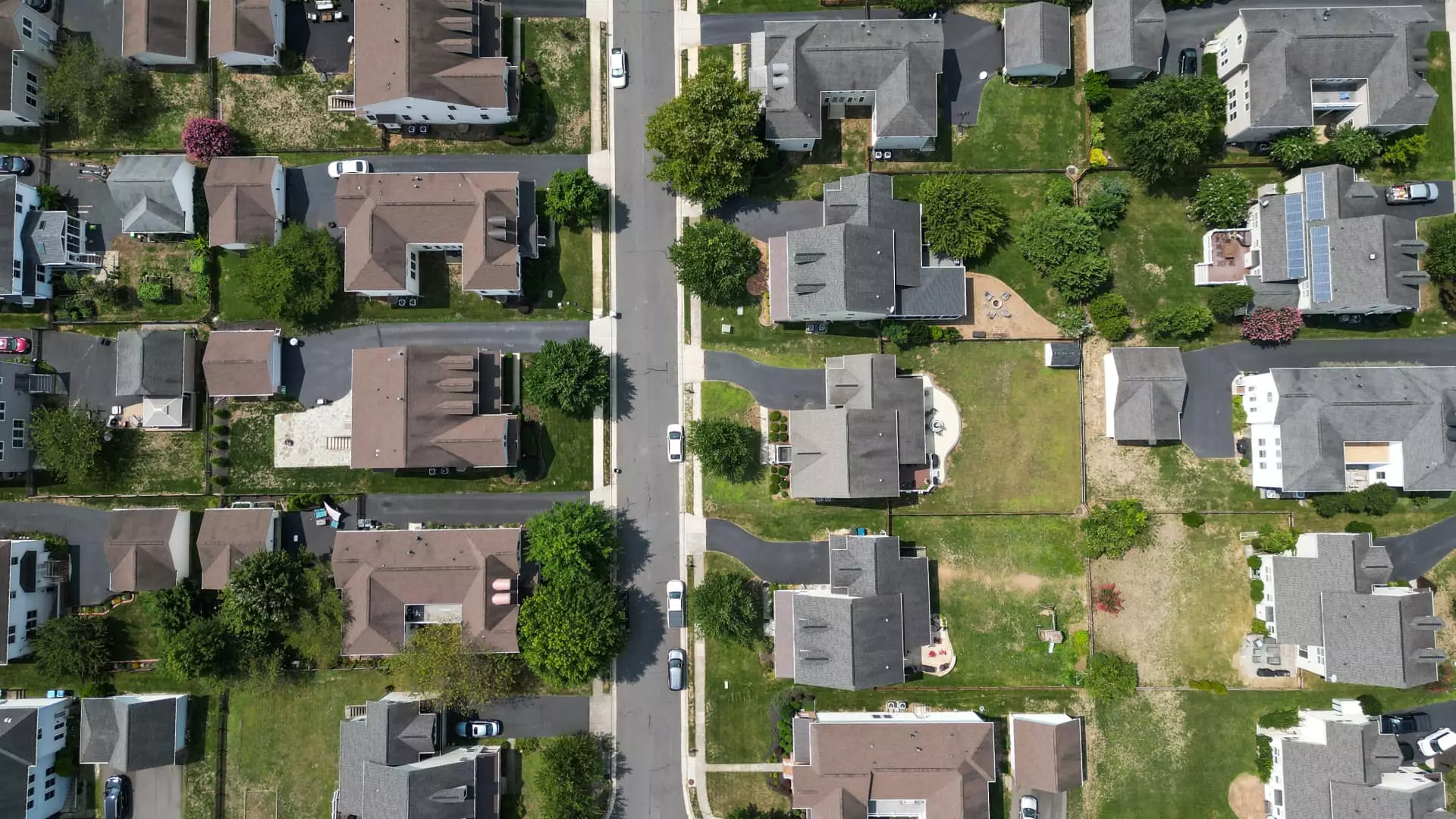In recent weeks, the housing market has exhibited a perplexing pattern: mortgage rates inch upward, yet application volumes stubbornly refuse to decline significantly. While the data suggests only a modest 0.8% increase in total mortgage applications, this superficial stability conceals deeper economic vulnerabilities. A closer look reveals that the slight rate hikes, from 6.82% to 6.84%, are not the cause of the stagnation but rather a symptom of an underlying malaise. Borrowers, both prospective homebuyers and those seeking refinancing, are increasingly sidelined by an environment where affordability is slipping beyond their reach. The supposed resilience in application numbers masks the reality that many are left on the sidelines, unable or unwilling to participate in a market that remains fundamentally uncertain.
Refinancing: The Weak Link in a Weak Market
Refinance activity, typically more sensitive to rate fluctuations, has declined sharply, dipping 3% last week and showing a year-over-year increase of only 22%. While these figures may seem optimistic at first glance, they are deceptively so. The small volume and the fact that refinancing remains a tool for existing homeowners to reduce costs imply an exhausted pool of borrowers. With rates still hovering near historically high levels, refinancers are discouraged, effectively freezing a vital segment of the housing economy. This stagnation threatens to become a barrier to economic growth because refinancing has historically been a catalyst for consumer spending and financial stability. The decline signals that even the most flexible part of the mortgage market is losing steam.
The Purchase Market’s Grim Outlook
Meanwhile, purchasing activity, typically a primary indicator of housing market health, shows a more troubling trend. After peaking at around $460,000 in March 2025, the average loan amount for home purchases has tumbled to $426,700—the lowest since early 2025. This decline is emblematic of a market that is retreating, forced into contraction by the relentless upward pressure on rates. For many potential homeowners, the dream of owning a home is slipping further out of reach as rising costs diminish affordability. The 3% weekly increase in purchase applications appears positive, but it is overshadowed by the stark reality that many qualified buyers are being priced out entirely. If the status quo persists, we can anticipate a continued stagnation in homebuying activity, fueling a broader economic slowdown.
The Political and Economic Ramifications
The response from markets, reacting to political signals and Treasury Department commentary, underscores a fragile confidence. When bond yields fluctuate due to concerns over Federal Reserve leadership, it underscores a fundamental truth: macroeconomic uncertainty is undermining the housing market’s recovery prospects. While some may chase short-term gains from perceived political stability, the underlying issue remains unchanged—policy missteps and rising rates are creating an environment where housing is increasingly exclusive rather than inclusive. For those of us in center-right liberal circles, this scenario demands pragmatic intervention. We need to balance inflation control with measures that support affordability and access. Failing to address these issues could entrench economic divides—turning homeownership into a privilege rather than a right.
The current landscape reveals a housing market teetering on the brink of stagnation. Despite superficial signs of resilience, the fundamentals tell a different story—one of increasing inaccessibility, declining transaction volumes, and a sluggish economy. This is a warning that conservative economic policies must be recalibrated urgently to prevent further deterioration of the housing sector and, by extension, broader economic stability.

